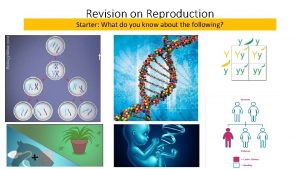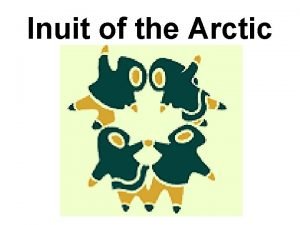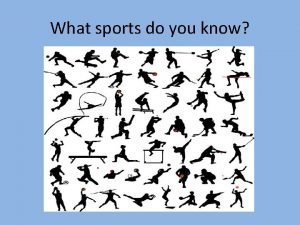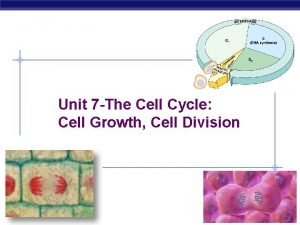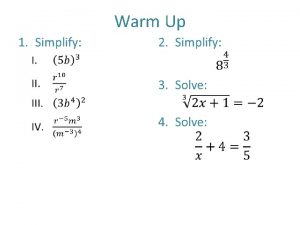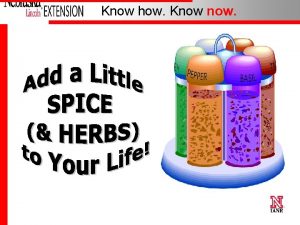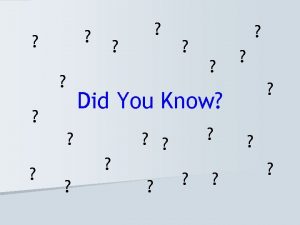Homeroom Warm Up 121119 Who do you know




















- Slides: 20

Homeroom Warm Up 12/11/19 Who do you know who has been especially good this year? What types of gifts does that person deserve?

Science Warm Up 12/11/19 Which body system is essential for life; is composed of heart, blood, and blood vessels; and circulates blood continuously to maintain homeostasis? A. blood vessels system B. digestive system C. excretory system D. cardiovascular system

Diffusion & Osmosis Homework p 201 -211 Due Friday

Think-Pair-Share • What would happen if a factory’s supplies never arrived? • What about if they couldn’t get rid of their garbage?

Cells are like factories. • Both cells and factories need to get things in (nutrients) and out (wastes). • These things keep the cell healthy and able to divide. • What part of the cell controls the things that go in and out of the cell? • CELL MEMBRANE

Moving Small Particles Small particles (like sugars) cross the cell membrane through passageways called channels • The channels are made of proteins • They pass through the channels by either active or passive transport

Passive Transport • Passive transport- the movement of substances across a cell membrane without the use of energy by the cell • Examples: diffusion and osmosis Le t se ’s ei t!

Active transport • Active transport- the movement of substances across the cell membrane that requires the cell to use energy • Usually is particles moving from an area of low concentration to an area of high concentration • Or…low density to high density

Define Diffusion The movement of molecules from an area in which they are highly concentrated to an area in which they are less concentrated.

Draw a diagram of an example of diffusion we saw in class.

Define osmosis • The diffusion of water across a selectively permeable membrane.

Define osmosis Water moves from a high concentration of water (less salt or sugar dissolved in it) to a low concentration of water (more salt or sugar dissolved in it). This means that water would cross a selectively permeable membrane from a dilute solution (less dissolved in it) to a concentrated solution (more dissolved in it).

Define osmosis In this picture a red blood cell is put in a glass of distilled water (all water with no salt or sugar in it). Because there is a higher concentration of water outside the cell, water enters the cell by OSMOSIS. In this case too much water enters and the cell swells to the point of bursting open. In the end pieces of cell membrane are left in the water. http: //www. usd. edu/~bgoodman/Osmos. htm

Define selectively permeable membrane • A membrane that allows only certain materials to cross it • Materials pass through pores in the membrane

Why are osmosis & diffusion important?

Why are osmosis & diffusion important? • All living things have certain requirements they must satisfy in order to remain alive – maintain homeostasis • These include exchanging gases (usually CO 2 and O 2), taking in water, minerals, and food, and eliminating wastes. • These tasks happen at the cellular level. • Molecules move through the cell membrane by diffusion

Moving Large Particles • Small particles cross the cell membrane by • Diffusion • Active transport • Passive transport • Large particles use the processes called endocytosis and exocytosis

Endocytosis • Endocytosis- the process by which a cell membrane surrounds a particle and encloses the particle in a vesicle to bring the particle into the cell • Vesicle- sacs formed from pieces of cell membrane cell PROTEI N

Exocytosis • Exocytosis- the process in which a cell releases a particle by enclosing the particle in a vesicle that then moves to the cell surface and fuses with the cell membrane • Things like wastes. . EXIT (EXO) the cell

Closure A student adds drops of dye to a beaker of roomtemperature water, as shown in the diagram below. Which diagram best shows the end result of diffusion?
 Ssds nj homeroom
Ssds nj homeroom West cabarrus high school
West cabarrus high school Homeroom expectations
Homeroom expectations Homeroom expectations
Homeroom expectations Homeroom.state.nj.us
Homeroom.state.nj.us Know history know self
Know history know self Do deep generative models know what they don’t know?
Do deep generative models know what they don’t know? Nothing formed against me shall stand song
Nothing formed against me shall stand song Fun facts about minecraft
Fun facts about minecraft Happpy nod
Happpy nod You're a poet and you don't know it
You're a poet and you don't know it When you're blue and you don't know
When you're blue and you don't know How to know if youre asexual
How to know if youre asexual Do you know who you are
Do you know who you are Will follow you wherever you ...........................
Will follow you wherever you ........................... 2021 graduation songs
2021 graduation songs Hello. jack how's business these days text
Hello. jack how's business these days text Know the categories of sports
Know the categories of sports What do you know about africa
What do you know about africa Growth factor mitosis
Growth factor mitosis I know him better
I know him better












